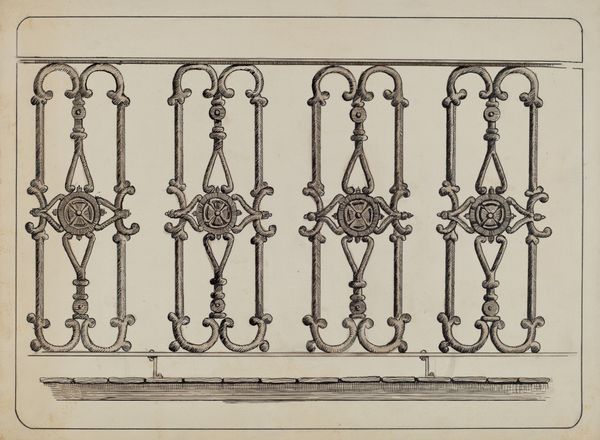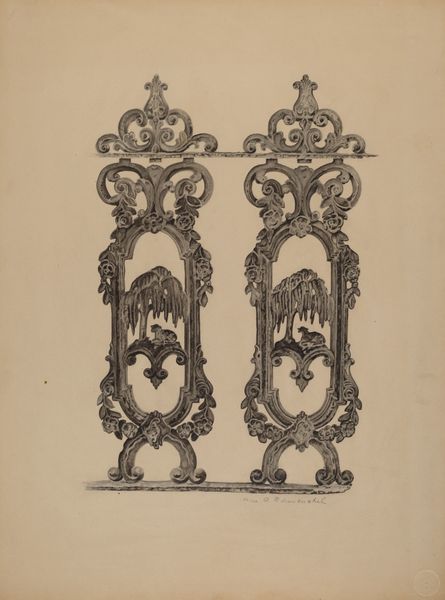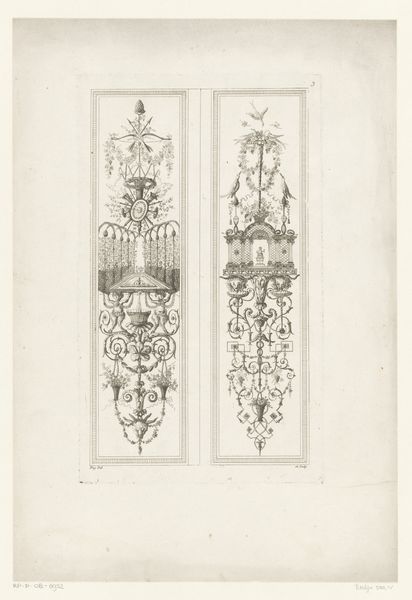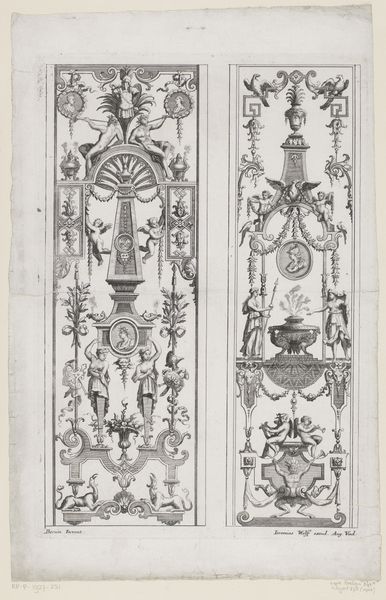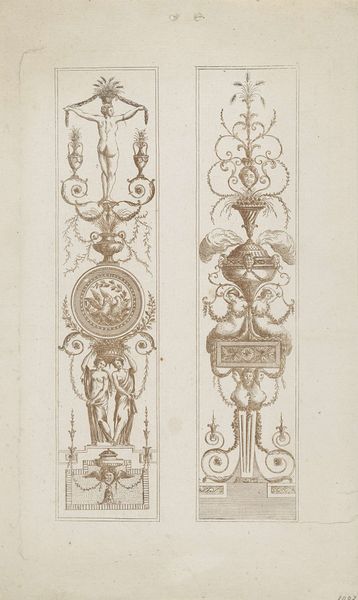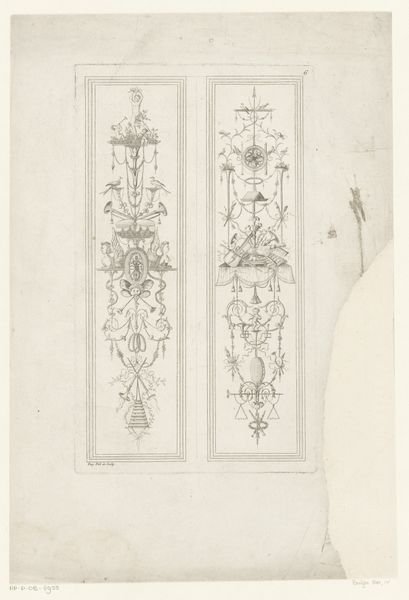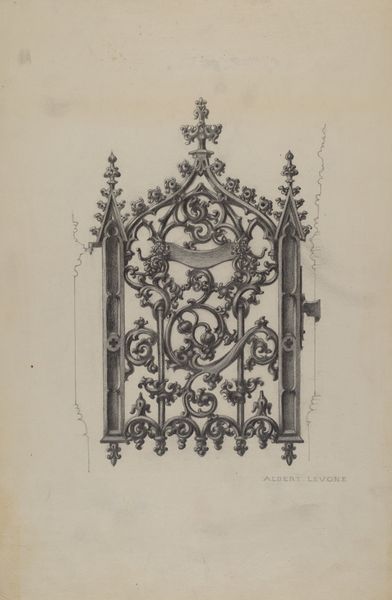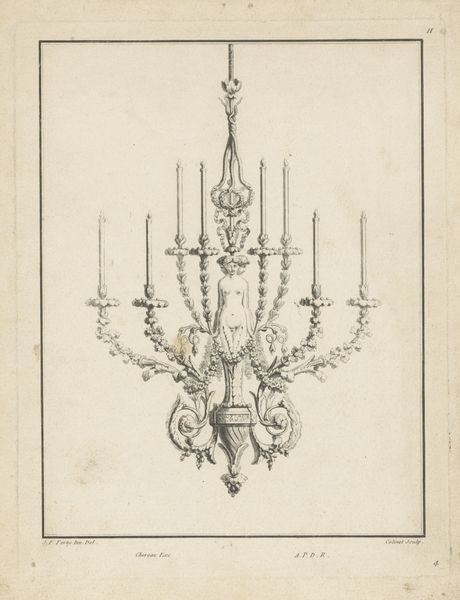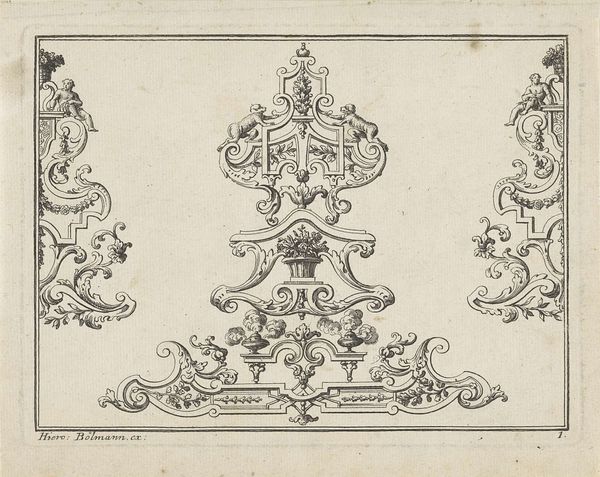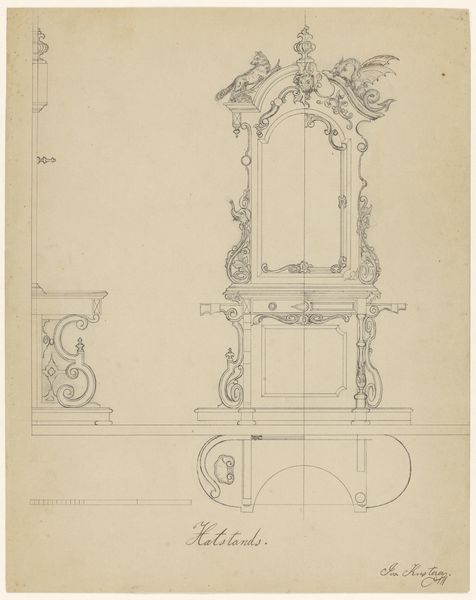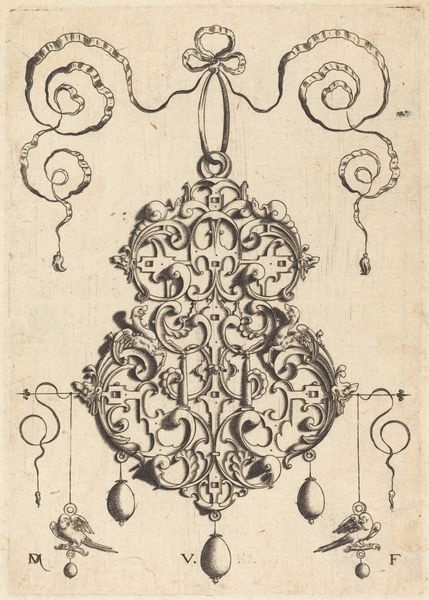
drawing, pencil
#
drawing
#
form
#
geometric
#
pencil
#
line
Dimensions: overall: 26.6 x 36.8 cm (10 1/2 x 14 1/2 in.)
Copyright: National Gallery of Art: CC0 1.0
Editor: So, this is Edward Loper’s "Iron Bannister," created around 1936. It's a pencil drawing. There's something both sturdy and delicate about it... What visual language do you see at play here? Curator: The bannister itself functions as a barrier, a protector. Yet, the artist adorns it with imagery, elevating function to something beyond pure utility. Notice the lyre motif nestled within the ironwork. How might that influence the perception of "safety" offered by the bannister? Editor: The lyre feels very symbolic, like music and poetry incorporated into architecture. Almost like an attempt to beautify and instill artistry within something quite ordinary. Curator: Precisely. And consider the historical context: the 1930s, a time of great economic hardship and social upheaval. Perhaps this image represents a yearning for beauty and order amidst chaos. Do you notice any other forms within the bannister’s design? Editor: I see these leaf-like curls, and almost what appear to be grape clusters. Does that bear any symbolic relevance? Curator: Grapes are powerful. They traditionally evoke themes of abundance, celebration, and transformation, often with religious implications linked to sacrifice. Do these familiar symbols influence your understanding of the artist's intentions, the intended mood? Editor: It certainly adds another layer! It transforms it, offering more complex and nuanced observations of home and place. Curator: So it does. Everyday architecture transformed with encoded signs from life. Editor: Thank you! I’ll certainly be looking at ordinary art objects a bit differently now.
Comments
No comments
Be the first to comment and join the conversation on the ultimate creative platform.
